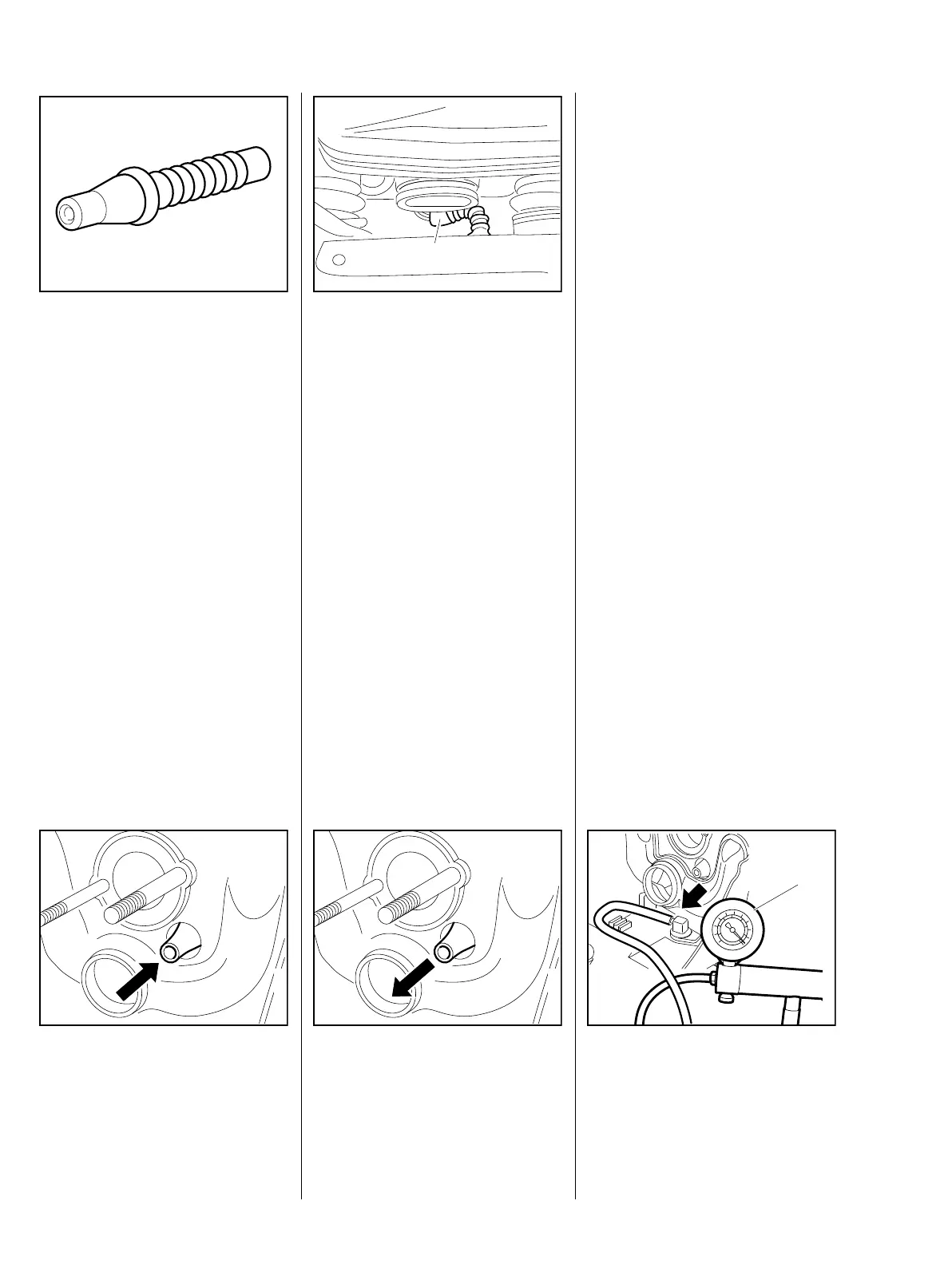88 TS 700, TS 800
A damaged impulse hose may lead
to impaired engine performance.
– Remove shroud, b 7.4
– Remove air guide shroud,
b 7.5
– Unscrew the rubber buffers on
the ignition and clutch sides,
b 10.2
– Unscrew the rubber buffers for
the front handle,
b 10.1
– Remove the carburetor,
b 12.2.1
– Troubleshooting, b 4.4 or
b 4.5
: Press the impulse hose out of the
hole in the tank housing, towards
the cylinder.
: Disconnect the impulse hose (1)
from the cylinder.
The impulse hose is shown without
intake manifold for clarity.
– Reassemble parts in reverse
order.
1
Note:
Ensure that the impulse hose is
routed correctly and without kinking.
– Coat with Press Fluid OH 723,
b 14
Note:
Draw the impulse hose into the hole
in the tank housing until the
circumferential groove on the
impulse hose engages the tapered
end of the hole.
: Draw the impulse hose through
the hole in the tank housing.
– Reassemble remaining parts in
reverse order.
A pressure equilibrium must always
prevail between the inside of the
fuel tank and the surrounding
atmosphere to permit troublefree
operation of the carburetor. This is
ensured by the tank vent.
If problems develop in the
carburetor or fuel supply, the tank
vent must always also be tested and
replaced if necessary. Correct
functioning is determined by testing
the fuel tank with negative pressure
via the fuel hose.
– Remove the carburetor,
b 12.2.1
– Drain the fuel tank.
Note:
Ensure that the fuel is disposed of
correctly and without harming the
environment.
: Connect the vacuum pump (1)
0000 850 3501 to the elbow
connector (arrow) and apply a
negative pressure to the fuel
tank.
1
12.5.3 Impulse hose 12.6 Tank vent
12.6.1 Testing

